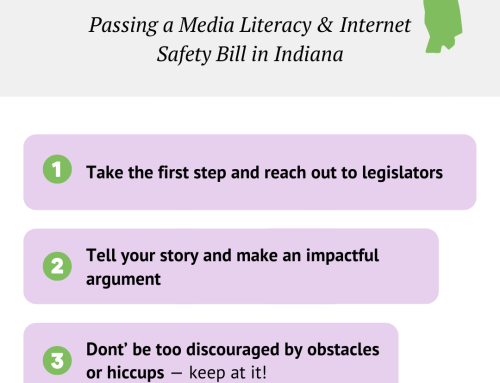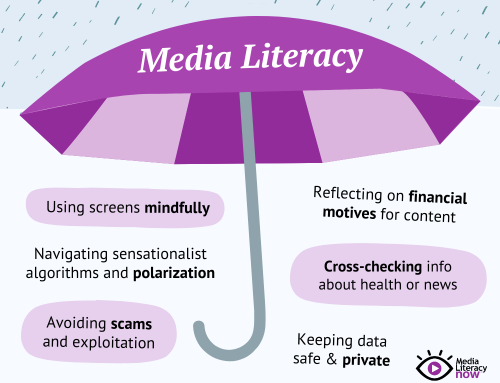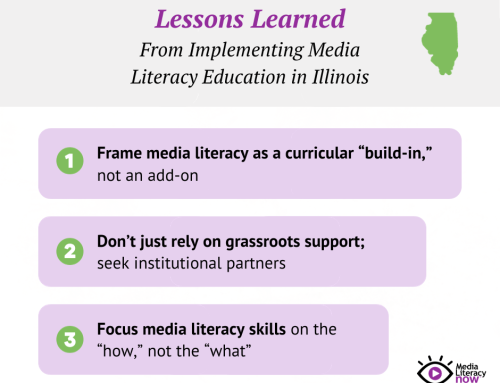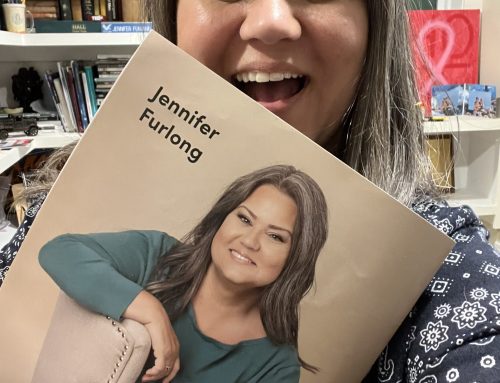
In July 2023, a group of STEM educators and media literacy advocates convened in Washington D.C. to discuss the skills students need to learn in K-12 science classrooms to better evaluate scientific information and resist misinformation.
This summer, Media Literacy Now convened a group of 21 STEM and media literacy educators to discuss the skills students need to learn to better evaluate scientific information and resist misinformation. During the two-day conference in D.C., participants discussed current standards per Next Generation Science Standards (NGSS), examples of misinformation in the classroom, ideas of what students need to learn to better evaluate scientific claims, and what media literacy instruction regarding information sources, critical thinking, and biases students should receive.
“There is an urgent need for instruction and resources to help young people resist the proliferation of false and manipulative science-related information on TikTok, YouTube, cable news and other media,” said Erin McNeill, CEO of Media Literacy Now. “We were so impressed by the educators we brought together and their eagerness to discuss ways in which we can help students understand how to effectively find and use scientific information.”
Among the attendees was Courtney Capozzoli, a science teacher at a high-achieving public high school in North Carolina. Dr. Capozzoli currently teaches earth/environmental science (mostly 9th graders) and AP environmental science (mostly 11/12th graders). “I’m seeing a cultural shift of distrusting science and an abundance of bogus claims made easily and shared widely due to social media, etc.,” she said. “Being exposed to an overwhelming amount of information can be confusing and I want students to be able to understand why messages are being shared so that they can make informed decisions for both personal consumption and general community/world wellbeing.”
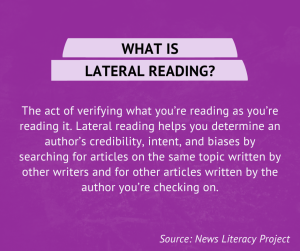 In her classroom, Dr. Capozzoli encourages students to ask “who, what, and why” when reading information and shares the strategy of lateral reading to help students find out the “who” and “why.”
In her classroom, Dr. Capozzoli encourages students to ask “who, what, and why” when reading information and shares the strategy of lateral reading to help students find out the “who” and “why.”
Jocelyn Miller, another conference attendee, also shared similar tactics and activities for incorporating media literacy into her science classrooms. Ms. Miller, who is a current Ph.D. Candidate and teaches science to 10th-12th graders, often poses big, complex questions to her students in anticipation that they will encounter many perspectives online. From there, she utilizes a flow chart to help students evaluate information sources. She believes that media literacy provides a foundation for students to continue to be learners, even beyond twelfth grade or college.
“You can’t expect to leave school with all the information you need for the rest of your life. You’re going to constantly be encountering new information and need to make decisions on that information – it’s a lifelong process,” said Ms. Miller. She added, “[It’s] more important than most of the concepts I teach in science. Even with my own kids, I care more that they know how to interpret what they encounter in the world than memorizing facts from a science class.”
Both Dr. Capozzoli and Ms. Miller became involved with Media Literacy Now’s science-focused work because they wish to see media literacy education more mainstream, both within education generally and in science classrooms. “I think [media literacy] is a pressing issue for the larger society and within my classroom. I also want to connect with other educators to see what’s working for them and how we can leverage the wealth of classroom and outside knowledge to help students become media literate citizens,” said Ms. Capozzoli.
The recent conference is part of a new science-focused media literacy project, supported by the Howard Hughes Medical Institute, that aims to incorporate media literacy education into science K-12 instruction. After bringing together education and media literacy experts to determine the skills students should learn in K-12 science classes to better evaluate scientific information and resist scientific misinformation, the next step will be to survey current lesson plans, videos, routines, and instructional materials and identify gaps or missing pieces. The ultimate goal is to be able to provide an inventory of instructional materials, including activities that challenge students to think more critically about scientific information, to best support teachers, like Dr. Capozzoli and Ms. Miller, in incorporating media literacy into their classrooms.
Support Media Literacy Now’s efforts to get media literacy education in all K-12 classrooms – donate now.

